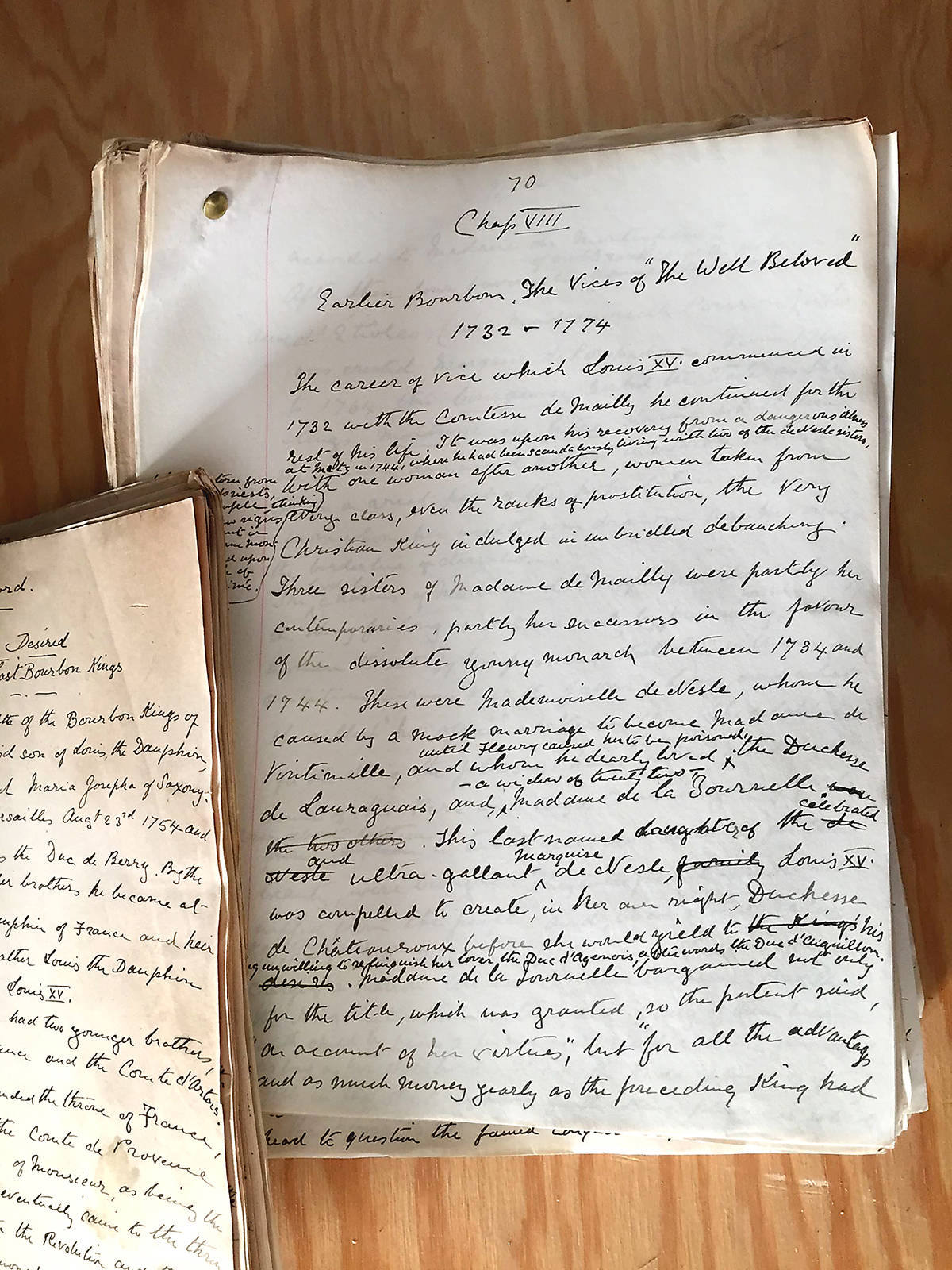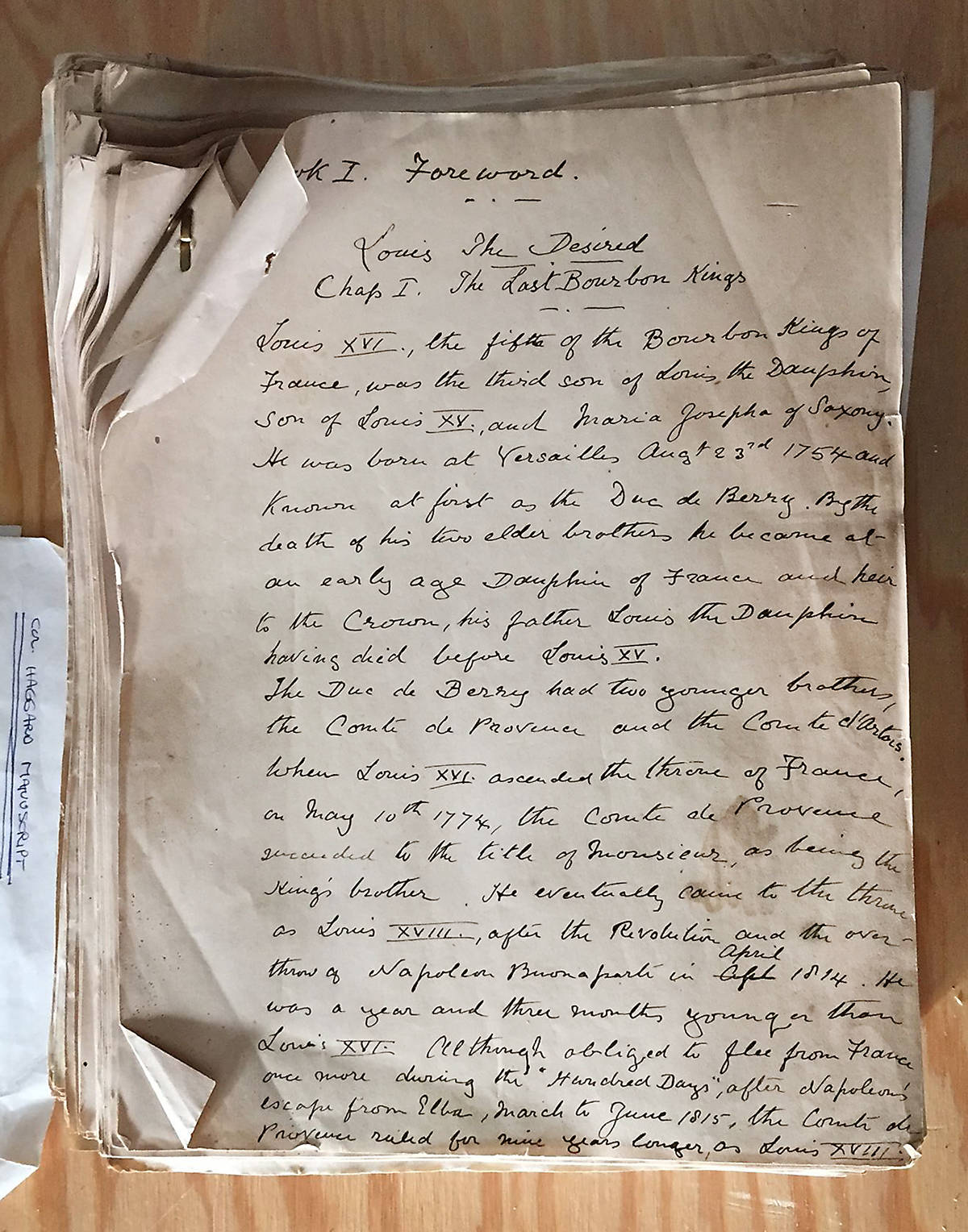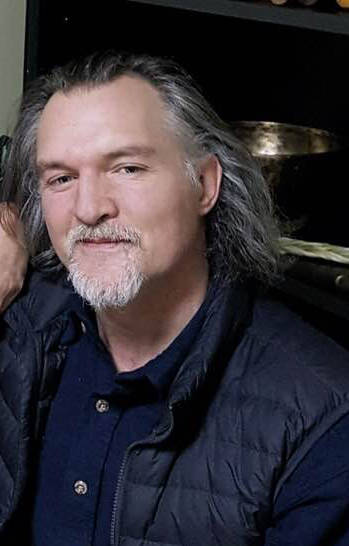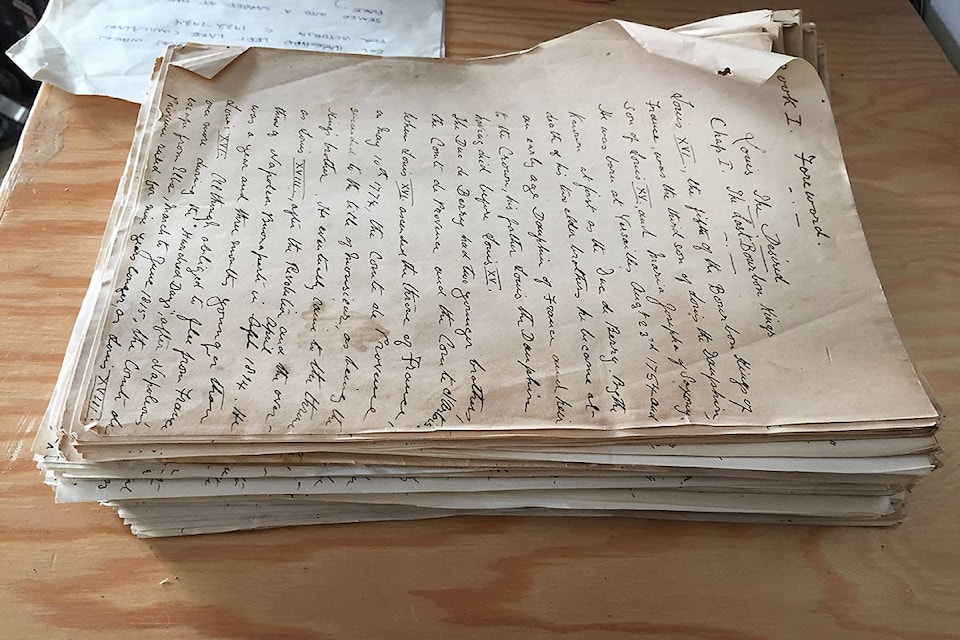Lake Cowichan author Dean Unger, while doing research for an upcoming book, [volume two of A Garden of Thieves: A story of colonial British Columbia] recently discovered a rare manuscript stowed tidily away in the archives at the Lake Cowichan Museum.
The manuscript was written by Lt.-Col. Andrew Haggard, a famous author during the Victorian era, who often visited the Lake area on sporting trips, and eventually purchased an estate along the Cowichan River.
Unger was astonished at his find.
“I was only a few days into my research when I spotted an unassuming grey box sitting on a high shelf among some books. A label affixed to the outside read, Haggard Manuscript. Initially, I was a little punch drunk at the sight of the label. I was well-familiar with the author his brother, H. Rider Haggard, from my book collecting exploits, but I almost didn’t believe what I was seeing. [H. Rider Haggard’s book, King Solomon’s Mines, is still a favourite adventure tale today.]
“I quickly rationalized that it must be some kind of photo-stat copy. I was shocked to see an actual hand-written manuscript, fairly tome-like in aspect, tucked neatly inside. A note on top reads: ‘Col. Haggard Manuscript. Died late 20s. Came into the Green’s possession when Colonel Haggard left Lake Cowichan for Victoria 1922 – 1924. Sealed into a garret at the Green place. The first manuscript page is titled, Book 1: Louis the Desired. Chapter 1: The Last Bourbon King.
“I didn’t recognize the title as it was and wondered whether it might be an unpublished work, but some quick digging revealed that this is likely the first draft manuscript of what would later become what is arguably his most famous title, Louis XVI and Marie Antoinette.”
Unger is an avid book lover.
“I’ve collected books most of my adult life and have seen some beautiful rarities. This was the first manuscript, that has been raised to a level of esteem by its success over time, that I’ve seen in person.”
Although Andrew Haggard’s work is fairly obscure today, he was popular 100 years ago.
“Speaking in contemporary terms, Haggard’s work itself is not considered on the calibre of a Hemingway or Poe, but is somewhere on par with an Atwood, or Robertson Davies. However, the fact it is hand-written, is from the turn of the century, and contains seminal, definitive research by the hand of one of the best of the time, is significant,” Unger says.
The Cowichan Valley attracted its share of overseas celebrities in those days.
“I was keyed onto the subject of famous personages who’d once lived here by my good friend, Dustin Lebeaux, who explained that certain members of the Bram Stoker family had an estate here at one time, on the Youbou side [of Cowichan Lake at Marble Bay].
“At first I was in disbelief. I began research on the subject and found that, in addition to the Stoker family, there were numerous writers and famous artists who travelled here, or set up shop in the Cowichan Valley during the 19th and early 20th centuries, attracted to the area by the majestic beauty here.
“Many of them touted the area as unequalled in the world — Rudyard Kipling was one of the Island’s biggest advocates. These were bold assertions they were making. However, many of them were ex-military people, much decorated for campaigns in British-held territories from the 1850s onward. Others were diplomatic dignitaries who travelled for politics, rather than war.
“In any case, Vancouver Island fast became the rage back in the motherland, and many writers relocated to Victoria, and from there, farther up-Island, seeking solitude and a place in the world from which to ply their craft.
“Among these were Rudyard Kipling, who was in Victoria for a time; Robert Service, who resided in Cowichan Bay, during his formative years in the early 1900s; the Stoker family; Frederick Whymper, the famous 19th century artist who was the hired to record visual impressions of the Vancouver Island Exploration Expedition in 1863, for posterity. There are many others who’ve come here over time.”
One of the people Unger has spoken to in Lake Cowichan is Tony Green, owner of Greendale Riverside Cabins, the property that includes what was once the Haggard property.
Unger discovered that “it was Norm Wood, an English teacher at the Lake Cowichan High School, who prompted Tony’s father, [Trevor Green, an avid historian] to help him search the attic for any clues of Haggard’s presence.”
The manuscript was found and soon afterwards donated to the Kaatza Station Museum.
In her Blog, An Angler’s Paradise ~ Sport fishing and Settler Society on Vancouver Island, 1860s–1920s, Diane Pedersen points out that Col. Haggard and his wife, Jeannette Ethel Fowler, owned their retirement property in Lake Cowichan from 1906 to 1919. In 1906, the two purchased the property on the Cowichan River, less than a mile from the Riverside Hotel, and christened their estate Camp Haggard, an epithet that suggests a wry wit beneath his serious writer’s mind, Unger thinks.
The larger part of Haggard’s canon of work comprised French histories, poetry, historical fiction, and roving accounts of his military exploits and sporting excursions. Through his fishing stories of angling on the wild and remote Cowichan River, he was published in international sporting magazines and brought fame to the area’s rich sport fishing.
“Later on, in 1914, Haggard was credited with saving the Cowichan River after he levied a state-of-the-nation statement titled, ‘Proposed act of violence’,” Unger says. It was essentially a letter-writing and publicity campaign, conducted through the auspices of Victoria’s The Daily Colonist, and in strict opposition to a plan by the Vancouver Power and Land Company who intended to divert water to generate power.
“On March 11, 1914, Haggard’s assertions to save the river were officially backed by Charles Lugrin, then editor of the Colonist. Both Haggard and Lugrin were ardent supporters of new environmental laws and thinking around sustainability and conservation that had then just begun.”
Pedersen also points out that an earlier story in the Colonist, dated April 19, 1893, states that the Haggards were ensconced at the Riverside Hotel, where they intended to remain for the newly opened fly fishing season.
This was among one of the earliest references to the author holidaying in the area, when his love affair with the region was born. On May 26, 1899, the Colonist again reported that the Haggards had once again taken rooms at the Riverside and were officially the first guests to stay there after a recent hotel renovation was completed.
The very fact that his comings and goings were reported in detail in the Victoria paper shows his imporance to the society of the time.
But he was interested in more than fishing at Lake Cowichan, according to Unger.
“Like his brother, [Andrew] adopted the technique of writing his manuscript entirely by hand, and with little editing or revision. This done, he would type-script the work and this would serve as his editing draft. [These were] the crucial first stages of the Haggard literary process. When compared to the eventual published book (1909), one can see his style begin to emerge as he became acquainted with his characters; decisions around word economy and refinement and imagery are evident. It’s a rare glimpse inside his mind, his process, that would not be afforded otherwise.”
Now that he’s been to the museum at the Lake, Unger says, “The staff at Lake Cowichan Museum have done an excellent job to preserve the subtleties of local culture here [at Lake Cowichan] over time and through its emerging history. In 1919, Haggard sold Camp Haggard to James Dunsmuir, Vancouver Island coal magnate. That the manuscript survived hidden there in the attic garret is incredible. The manuscript is, in a way, like a final gift to the community from Lt.-Col. Andrew Haggard, that there yet remains a rare gem beneath our feet here in Cowichan.”
Unger said, “I’ve been researching in archives for the better part of 30 years and seen a lot of documents but that one! As soon as I opened it, I thought: wow! This is exceedingly important, from both a literary perspective and a research perspective. I talked to the archivist at the University of British Columbia Special Collections and she fully confirmed that it provides exceedingly rare research value.
“It belongs to the museum but the way I see it, it should become a special presentation. It is magnificent to look at. It should be put in a hermetically sealed, clear case out where it can be viewed and appreciated but not touched. That’s the kind of thing it is,” Unger said.
The reaction to the find has been tremendous.
“People are so excited. But, then, the people in Lake Cowichan have strong ties to their place.”



